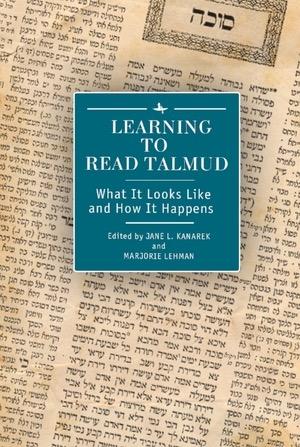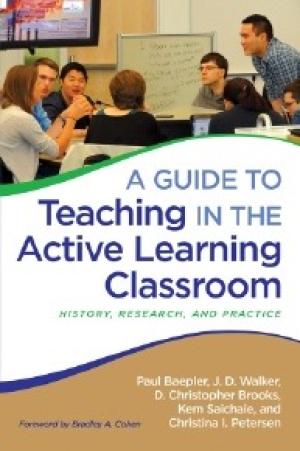Resources by Marie Nuar

The subtitle says it all. This is not a how-to book that will teach one how to read the Talmud, but a book on how to teach others to read the Talmud. It is part of a “growing field of the scholarship of teaching and learning (SoTL), a field that seeks to expand the research agendas of scholars in a particular discipline to include research into the teaching or learning of that discipline or both” (xii). Each chapter is written by a different instructor of Talmud, all of whom have various methods and goals for teaching Talmud to their students. While the title might sound like it severely restricts its audience to those who teach Talmudic students, it doesn’t. Insofar as the book examines various methods for teaching a text that is both ancient and in a foreign language, the book could be useful for anyone who teaches primary texts, especially primary texts that involve a foreign or dated language. The book does not advocate a particular method of teaching or approach to reading the Talmud, recognizing that the best method and approach would depend on the goals of the class and the students’ previous exposure to Hebrew in general and the Talmud in particular. Some of the instructors focus more on the technicalities of the languages, such as Berkowitz and Tucker. Others, such as Gardner and Alexander, focus more on how one teaches the text to non-specialists. Kanarek examines the role of using secondary readings to understand the primary text in teaching. Whatever one’s style of teaching or goal for a primary text in a foreign language, one can find various ideas for how to implement them in the classroom. Each chapter gives a brief background as to the intent and assumptions of the instructor, specific examples of what was done, student feedback or responses, as well as post-class reflections. Berkowitz discusses the usefulness of study guides for assisting students in asking the right questions about grammar and vocabulary to aid their understanding and make technical terms seem less alien. Tucker exemplifies in his approach how to help students appreciate and not gloss over difficulties in the texts. Kanarek examines how different types of secondary readings can help students in different ways discover and appreciate issues in the texts. Gardner considers how explaining the narratives and surrounding culture aids non-specialists in understanding and appreciating the texts. Alexander structures her class to help students appreciate the possibility of more than one answer. All in all, this book offers some very practical ideas on teaching original and foreign texts.

This book examines a particular type of classroom organization known as the “active learning classroom.” This type of classroom is not a lecture hall, but rather, is a room where there is no clear front or back, where students sit in movable chairs around round tables that facilitate group work shared with the larger group via screens. The very organization of the classroom forces the professor to have their back to at least some of the students all the time. This type of classroom interaction seems to be designed for larger class sizes, helping to transform a large lecture hall of students into a classroom where teacher and student interaction, as well as student-to-student interaction, is maximized. These types of classrooms have been shown to have a positive impact on students’ grades, which could be attributed to the room configuration inhibiting certain negative activities while encouraging positive ones. Active learning classrooms provide four main advantages: “immersion learning, the social dimension of learning, collaborative learning, and the performance aspect of teaching and learning” (16). Teaching in an active learning classroom is no longer just transmission of knowledge but a collaborative effort engaging the students for better and more long-term retention of knowledge. The subtitle of the book is “History, Research, and Practice.” The history of this method of teaching is covered in chapter one. The research that supports the practice is the focus of chapters two and three. Chapter two focuses more on the research aspects while chapter three focuses on the role that social interactions have in learning. The core of the book, chapters three through eight, gives practical suggestions on how to implement the teaching method, and presents common difficulties and how to overcome them. The last three chapters focus on how to help professors learn this method of teaching, a suggested methodology on how to study whether the change of teaching method had a positive impact on student learning, and what the future might hold for this teaching method. The book advocates a particular physical organization of the classroom. This is not up to the individual professors, but to the institutions in which they work. Even if one does not have the particular physical layout advocated in this book, there are a number of helpful tips for professors who seek to more actively engage their students. With chapters titled, “Assignments and Activities,” “Managing Student Groups,” and “Assessment and Feedback,” it is easy to find practical suggestions on how to make the classroom less didactic and more engaged. Each chapter has helpful and clear subheadings that make it easy to scan for the topic that one needs. Many of these methods are helpful in the religious studies classroom to help engage the student for a greater learning outcome. The examples in the book range from the sciences through to the humanities, helping a humanities professor get ideas on means of implementing the method in their own classroom.